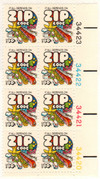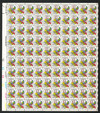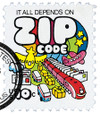
# 1511 - 1974 10c Zip Code
10¢ Zip Code
Quantity: 150,000,000
First Stamp With Mr. Zip In The Selvage
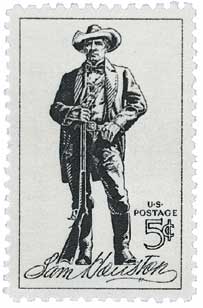
On January 10, 1964, Mr. Zip first appeared in the selvage of a stamp sheet honoring Texas icon Sam Houston.
Prior the creation of Zip codes, the US had postal districts or zones for use in larger cities. As towns and cities grew, the Post Office needed a more organized system to help separate the mail. In 1944, postal inspector Robert Moon submitted a proposal calling for a three-digit Zip code to help sort the mail. For this, Moon is often considered the father of the Zip Code, though it wouldn’t be implemented for nearly 20 years.
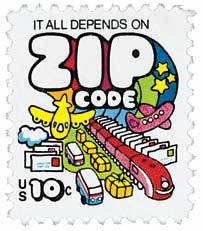
Then on July 1, 1963, the Post Office unveiled its new Zip Code system (ZIP stands for Zoning Improvement Plan). In the five-digit codes, the first three numbers represented the sectional center facility, while the last two numbers were often the same as the old postal zone numbers. The introduction of Zip Codes was a big change, and not everyone adapted quickly. And that’s where Mr. Zip comes in.
The design of Mr. Zip is credited to Howard Wilcox, who first created the character for a New York bank’s bank-by-mail campaign. The Post Office Department eventually acquired the rights to the character, changed it slightly, and named him Mr. Zip.
Less than a year after Zip Codes were introduced, Mr. Zip first appeared in the selvage of a US stamp sheet. He was pictured in the bottom left-hand corner of the Sam Houston stamp issued on January 10, 1964. Over the years, Mr. Zip was added to several stamp sheets, leading to a fun new collecting trend. In 1972, the Zippy Collectors Club was created for people collecting stamps with Mr. Zip in the selvage.

Mr. Zip also quickly became infused into American culture. The Post Office was determined to get everyone to use Zip Codes, so they launched a massive advertising campaign. Mr. Zip was featured in newspapers and magazines, TV and radio and was pictured on mail trucks and in post office lobbies.
One of the main goals of Mr. Zip was to appeal to children, so they would grow up knowing to use Zip Codes. Soon Mr. Zip had his very own comic strip and board game. Plus he was pictured on a variety of memorabilia, including a thermos set, and tin bank. In later years he would appear on a toy mail car, toy train, jewelry, clothes, mugs, and have his own bobble head. In the 60s, children were also encouraged to include the North Pole’s Zip Code on their letters to Santa.
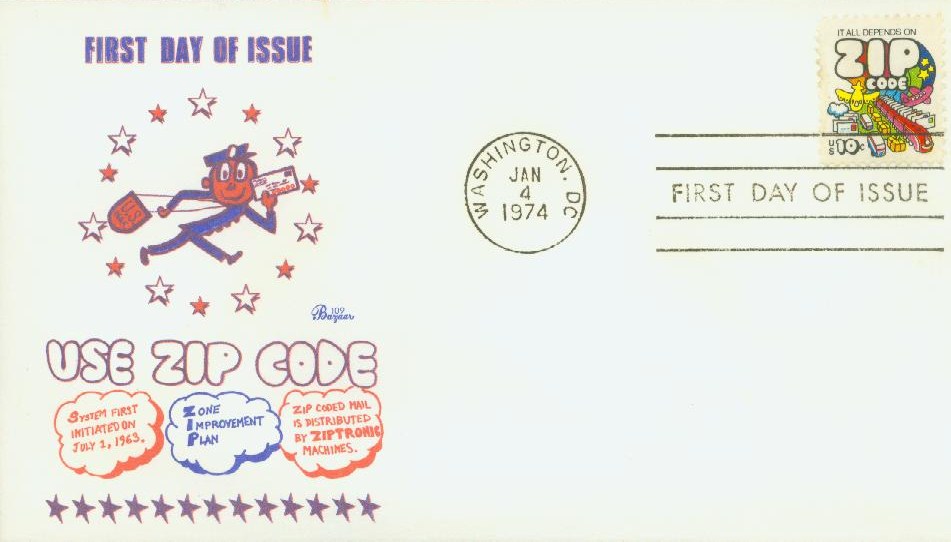
Celebrities also lent their talents to the Mr. Zip Campaign. Singer Johnny Puelo did a commercial with Mr. Zip, while Ethel Merman did a promotional jingle to the tune of “Zip-A-Dee-Doo-Dah” that was featured in a Mr. Zip commercial.
The Mr. Zip craze lasted nearly 20 years, until the introduction of Zip+4 in 1983. Though he continued to appear in the selvage of a few stamps until 1986. Mr. Zip then reemerged in 2013. That year the USPS picturing Mr. Zip in the selvage of a few stamps to honor the 50th anniversary of the Zip Code system.
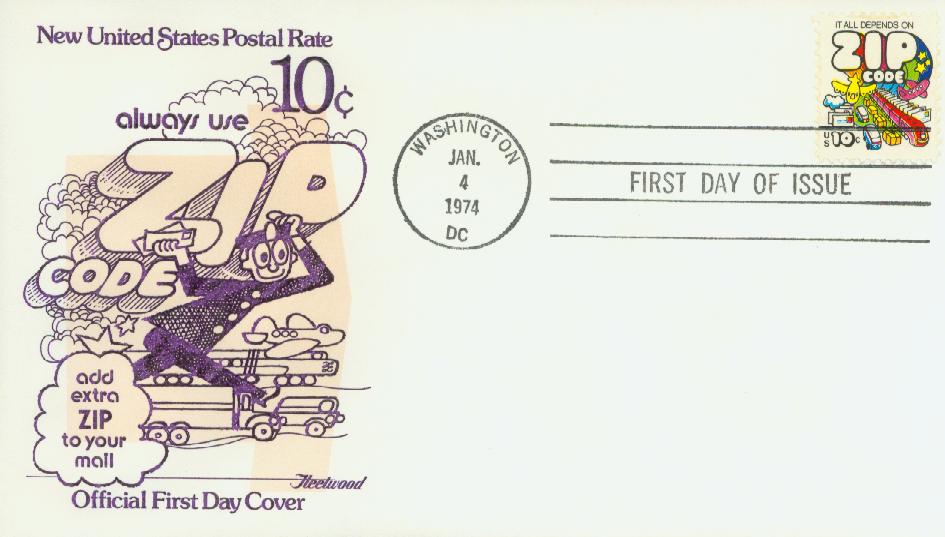
Click here for lots more images and history about Mr. Zip from the National Postal Museum.
10¢ Zip Code
Quantity: 150,000,000
First Stamp With Mr. Zip In The Selvage

On January 10, 1964, Mr. Zip first appeared in the selvage of a stamp sheet honoring Texas icon Sam Houston.
Prior the creation of Zip codes, the US had postal districts or zones for use in larger cities. As towns and cities grew, the Post Office needed a more organized system to help separate the mail. In 1944, postal inspector Robert Moon submitted a proposal calling for a three-digit Zip code to help sort the mail. For this, Moon is often considered the father of the Zip Code, though it wouldn’t be implemented for nearly 20 years.

Then on July 1, 1963, the Post Office unveiled its new Zip Code system (ZIP stands for Zoning Improvement Plan). In the five-digit codes, the first three numbers represented the sectional center facility, while the last two numbers were often the same as the old postal zone numbers. The introduction of Zip Codes was a big change, and not everyone adapted quickly. And that’s where Mr. Zip comes in.
The design of Mr. Zip is credited to Howard Wilcox, who first created the character for a New York bank’s bank-by-mail campaign. The Post Office Department eventually acquired the rights to the character, changed it slightly, and named him Mr. Zip.
Less than a year after Zip Codes were introduced, Mr. Zip first appeared in the selvage of a US stamp sheet. He was pictured in the bottom left-hand corner of the Sam Houston stamp issued on January 10, 1964. Over the years, Mr. Zip was added to several stamp sheets, leading to a fun new collecting trend. In 1972, the Zippy Collectors Club was created for people collecting stamps with Mr. Zip in the selvage.

Mr. Zip also quickly became infused into American culture. The Post Office was determined to get everyone to use Zip Codes, so they launched a massive advertising campaign. Mr. Zip was featured in newspapers and magazines, TV and radio and was pictured on mail trucks and in post office lobbies.
One of the main goals of Mr. Zip was to appeal to children, so they would grow up knowing to use Zip Codes. Soon Mr. Zip had his very own comic strip and board game. Plus he was pictured on a variety of memorabilia, including a thermos set, and tin bank. In later years he would appear on a toy mail car, toy train, jewelry, clothes, mugs, and have his own bobble head. In the 60s, children were also encouraged to include the North Pole’s Zip Code on their letters to Santa.

Celebrities also lent their talents to the Mr. Zip Campaign. Singer Johnny Puelo did a commercial with Mr. Zip, while Ethel Merman did a promotional jingle to the tune of “Zip-A-Dee-Doo-Dah” that was featured in a Mr. Zip commercial.
The Mr. Zip craze lasted nearly 20 years, until the introduction of Zip+4 in 1983. Though he continued to appear in the selvage of a few stamps until 1986. Mr. Zip then reemerged in 2013. That year the USPS picturing Mr. Zip in the selvage of a few stamps to honor the 50th anniversary of the Zip Code system.

Click here for lots more images and history about Mr. Zip from the National Postal Museum.





